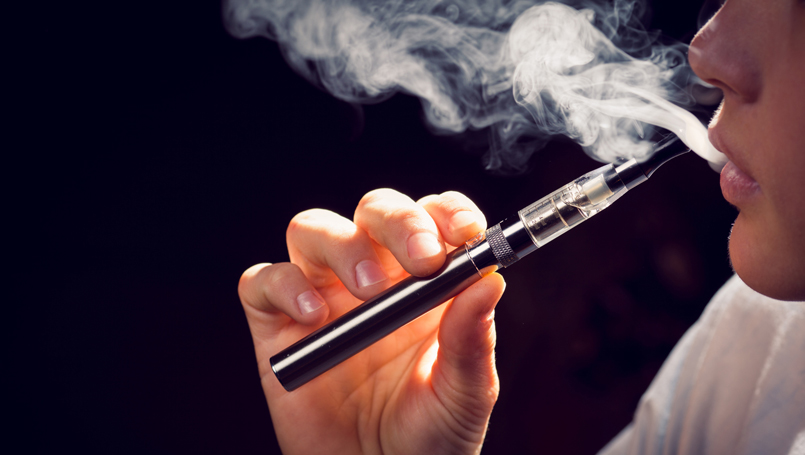Revealed The Truth of Health Risks of Vaping – Unmask the Dangers and Explore Regulatory Challenges
Welcome to a deep dive into the world of vaping and its impact on health. With vaping becoming increasingly popular, questions about its safety linger. In this article, we’ll explore the truth behind vaping and its potential risks to your health.

Table of Contents
The Rise of Vaping Culture
In the ever-evolving landscape of nicotine consumption, the rise of vaping has been nothing short of meteoric. What began as a purported safer alternative to traditional cigarettes has blossomed into a cultural phenomenon, attracting a diverse array of users ranging from former smokers seeking a less harmful option to curious newcomers drawn by the allure of flavored e-liquids and sleek device designs.
As the vaping industry continues to flourish, generating billions in revenue each year, a heated debate has emerged surrounding the potential health implications of this innovative yet controversial practice.
Untangling the Health Risks
At the heart of the vaping discourse lies a complex web of conflicting studies, polarized opinions, and a general lack of long-term research data. While proponents tout vaping as a safer alternative to combustible cigarettes, claiming it can aid in smoking cessation and reduce exposure to harmful tar and carcinogens, critics raise concerns about the potential risks associated with inhaling vaporized e-liquids and flavorings.
One of the primary concerns revolves around the presence of toxic chemicals, such as formaldehyde and acrolein, which have been detected in some e-cigarette aerosols. Additionally, the long-term effects of inhaling propylene glycol and vegetable glycerin, two common ingredients in e-liquids, remain largely unknown.
Furthermore, the emergence of vaping-related illnesses, including the notorious EVALI (E-cigarette or Vaping Product Use-Associated Lung Injury) outbreak in 2019, has raised significant alarm bells and fueled concerns about the potential health consequences of vaping.
The Allure of Harm Reduction
Despite the controversies surrounding vaping, many public health experts and organizations have embraced the concept of harm reduction, acknowledging that while vaping may not be entirely risk-free, it could be a significantly less harmful alternative for individuals who struggle to quit smoking conventional cigarettes.
Organizations like the UK’s National Health Service and the Royal College of Physicians have endorsed vaping as a potentially effective smoking cessation tool, citing evidence that it can be up to 95% less harmful than traditional smoking.
However, it’s important to note that this harm reduction approach is contingent upon proper regulation, quality control, and responsible usage – factors that have proven challenging to maintain in the rapidly evolving vaping industry.
Regulatory Challenges
As the vaping landscape continues to evolve, regulators across the globe have grappled with the challenge of establishing comprehensive guidelines and oversight mechanisms. The lack of a unified regulatory framework has led to a patchwork of laws and policies, with some countries embracing vaping as a harm reduction strategy, while others have imposed stringent restrictions or outright bans.
In the United States, the Food and Drug Administration (FDA) has been tasked with regulating the vaping industry, but the process has been fraught with legal battles and delays. The agency has faced criticism for its perceived inaction, particularly in the wake of the EVALI outbreak, which highlighted the dangers of unregulated and counterfeit vaping products.
Finding a Balanced Perspective
As the debates surrounding vaping rage on, it’s crucial to approach this complex issue with a balanced and nuanced perspective. While the potential risks cannot be ignored, it’s equally important to recognize the potential benefits of vaping as a harm reduction tool, particularly for those struggling to quit smoking.
Ultimately, the key lies in responsible usage, education, and effective regulation. Individuals considering vaping should thoroughly research and understand the potential risks, seek guidance from healthcare professionals, and prioritize obtaining products from reputable and regulated sources.
Moreover, ongoing research and open dialogue between stakeholders, including public health experts, policymakers, and the vaping industry itself, are essential to navigate this evolving landscape and develop evidence-based policies that prioritize public health while respecting individual choices.
Frequently Asked Questions: The Truth of Health Risks of Vaping
Q: Is vaping safer than smoking traditional cigarettes?
A: While vaping is generally considered less harmful than smoking combustible cigarettes, it is not entirely risk-free. The long-term effects of inhaling vaporized e-liquids and flavorings are still being studied, and there are concerns about the potential presence of toxic chemicals in some vaping products.
Q: Can vaping help me quit smoking?
A: Many public health organizations view vaping as a potentially effective smoking cessation tool, as it can provide a less harmful alternative to traditional cigarettes and help individuals transition away from smoking. However, individual experiences may vary, and guidance from healthcare professionals is recommended.
Q: Are there any age restrictions or regulations surrounding vaping?
A: Regulations surrounding vaping vary across different countries and jurisdictions. In the United States, for example, the FDA has implemented age restrictions, prohibiting the sale of e-cigarettes and vaping products to individuals under the age of 21.
Q: Are all vaping products created equal?
A: No, not all vaping products are created equal. The quality and safety of vaping products can vary greatly, with some products containing potentially harmful ingredients or contaminants. It is essential to obtain vaping products from reputable and regulated sources to mitigate potential risks.
Q: Is it safe to inhale “secondhand” vapor from e-cigarettes?
A: While the health risks associated with secondhand vapor from e-cigarettes are generally considered lower than those of secondhand smoke from traditional cigarettes, experts recommend minimizing exposure, particularly for vulnerable groups such as children and pregnant women.
As the vaping industry continues to evolve and more research emerges, it’s crucial to stay informed and approach this complex issue with an open mind and a commitment to prioritizing public health and safety. By fostering constructive dialogue and embracing evidence-based policies, we can navigate the haze of uncertainty and work towards a future where responsible vaping practices coexist with robust consumer protection measures.






